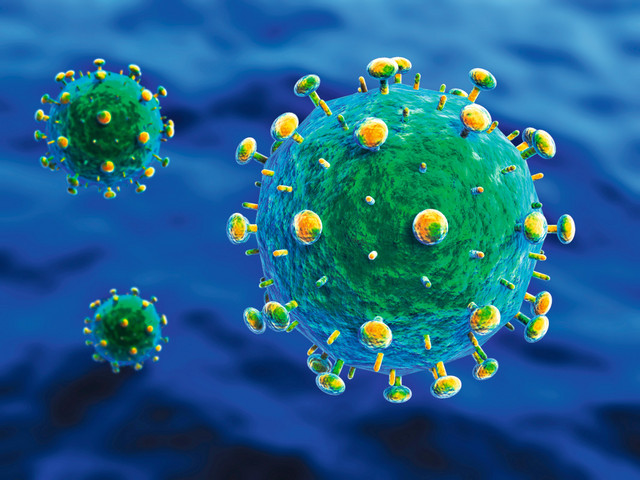HIV research: viral origin influences infectivity
A research team led by Stefan Pöhlmann from the German Primate Center (DPZ) and Christina Karsten from the University of Duisburg-Essen has discovered that the type of cells in which a virus originates can influence its infectivity. The cells of origin also influence resistance to antibodies and lectins, sugar-binding proteins with potential therapeutic benefits. In cell culture experiments with the SI virus – a model virus for HIV – the team has found a possible explanation for the varying degrees of infectivity and resistance of the viruses. This could lead to the development of better treatment methods for HIV.
Viruses have no metabolism of their own and are therefore dependent on host cells, which they use to produce their viral components. HI viruses prefer to replicate in CD4+ T cells and macrophages of the immune system.
In cell culture experiments with the SI virus, the researchers were able to show that the resistance of viruses to lectins and antibodies is significantly influenced by the type of these host cells. This observation can possibly be explained by the fact that the protective envelope of the viral envelope protein, which consists of sugars, is composed differently depending on the cell type. The HIV envelope protein is essential for the binding and fusion of the virus to non-infected cells.
The sugar structures, known as glycans, sit on the envelope protein of the virus and protect it from being recognized by the immune system. The exact molecular composition of these glycans by the important virus producer cells, macrophages and CD4+ T cells, was previously unknown.
"We were able to show that the glycans are incorporated in different quantities," explains Stefan Pöhlmann, Head of the Infection Biology Unit at the DPZ. "This varying appearance depends on the type of cells from which the SI virus originates."
Like HIV, SIV can attack both CD4+ T cells and macrophages and multiply in them. Macrophages are white blood cells and, as so-called scavenger cells, are just as important a part of the immune system as CD4+ T cells.
"Viruses that have developed in the macrophages showed a higher infectious capacity," says Christina Karsten from the Institute for Research on HIV and AIDS-associated Diseases at Essen University Hospital and Essen University Hospital. "Viruses originating from the so-called CD4+ T cells were more sensitive to certain lectins, while the virus from macrophages was more easily neutralized by antibody-containing sera."
The researchers hope that their new findings will contribute to the development of new HIV therapies.
Original publication
Karsten CB, Buettner FFR, Cajic S, Nehlmeier I, Roshani B, Klippert A, Sauermann U, Stolte-Leeb N, Reichl U, Gerardy-Schahn R, Rapp E, Stahl-Hennig C, Pöhlmann S (2024): Macrophage- and CD4+ T cell-derived SIV differ in glycosylation, infectivity and neutralization sensitivity. PLOS Pathogens 20 (5): e1012190. https://doi.org/10.1371/journal.ppat.1012190
Editor: Dr. Milena Hänisch, Referat für Kommunikation & Öffentlichkeitsarbeit der Medizinischen Fakultät Universität Duisburg-Essen


